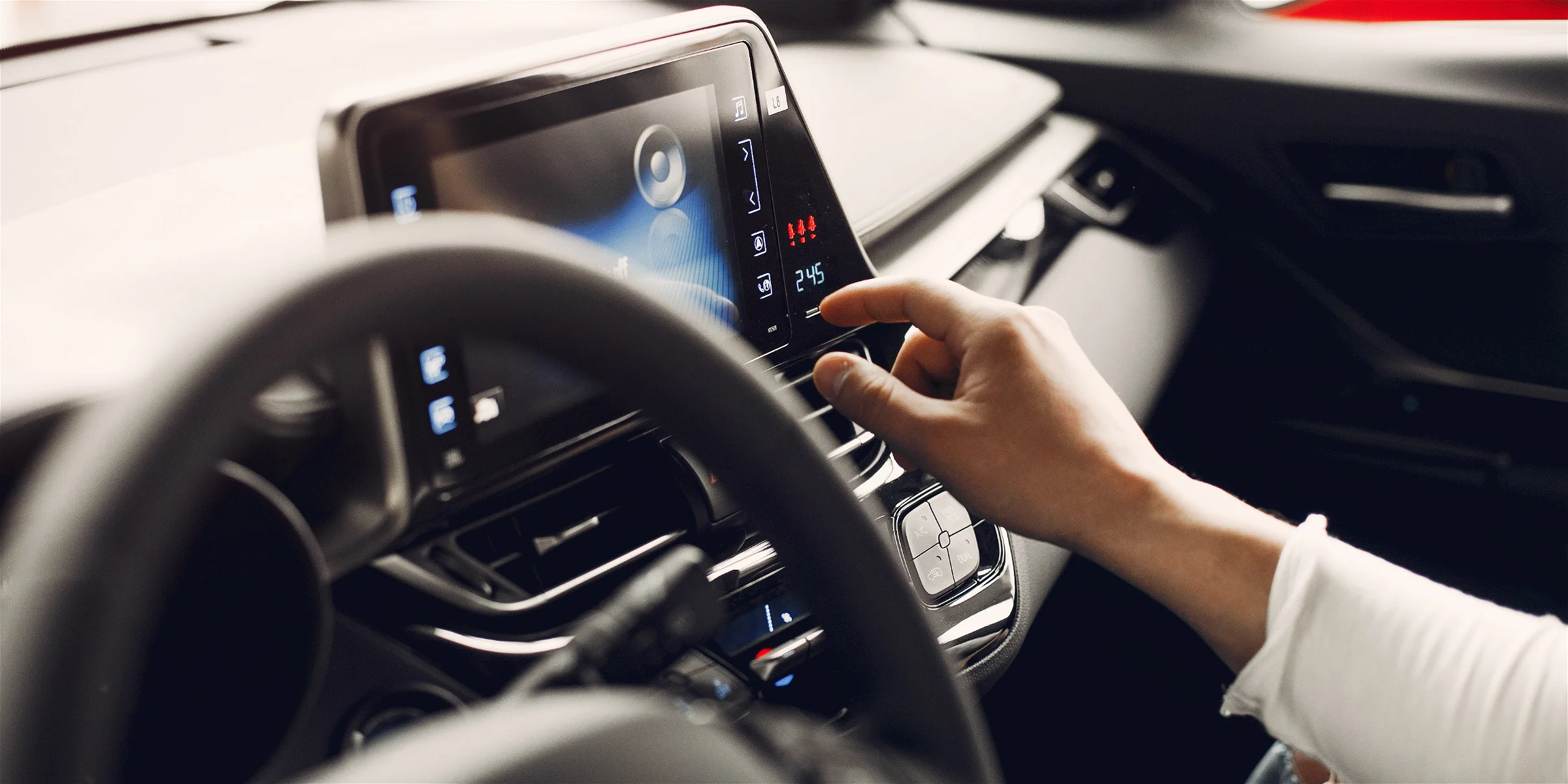
Are Cars With Touchscreens More Dangerous?
Over the past 20 years, states, counties, and cities throughout the US have passed laws regulating the use of cell phones while driving. Yet, these laws don’t address another major source of technological distraction: In-vehicle touchscreens.
As researchers turn their attention to the risks of touchscreens, evidence mounts that cars with touchscreens are more dangerous than cars with traditional knobs and buttons.
Study: Touchscreen Use and Driver Awareness
To determine just how distracting vehicle touchscreens are, one auto magazine decided to put them to the test. Journalists at the magazine Vi Bilägare tested 11 recent-model vehicles with touchscreens against a 2005 Volvo V70 with traditional knobs and buttons.
In the study, the magazine put the 12 vehicles on a straight, closed course. Each vehicle’s driver had a chance to explore the vehicle’s controls before beginning the test.
During the test, each driver accelerated to 68 miles per hour, then carried out a checklist of in-vehicle tasks like turning on the radio, finding a specific radio station, turning up the heat, and activating the vehicle’s heated seats. Each vehicle was monitored to see how long it took to do the in-vehicle tasks 一 and how much time the driver’s eyes were off the road while they executed the different tasks.
The 2005 Volvo V70, with its knobs and buttons, beat the touchscreen vehicles by “a large margin,” wrote the team at Vi Bilägare. The Volvo’s driver completed the task list in under ten seconds and reported no trouble doing so.
In the 11 tested touchscreen vehicles, drivers needed more than 20 seconds to complete the task list. The driver of the Tesla Model 3, for instance, took 23.5 seconds. In the BMW iX, the driver needed 30.4 seconds.
Why Touchscreen Distraction Matters
Driving a vehicle demands a driver’s full attention. When a driver reaches over to change the radio station or to adjust temperature controls, they’re dividing their attention between the road and the task at hand. The faster and easier it is to complete the second task, the less attention gets diverted 一 allowing a driver to respond to events on the road.
Split attention causes some distraction even when a driver can keep their eyes on the road while driving. When a driver has to take their eyes off the road, the risks compound quickly.
For instance, in the Vi Bilägare test, the vehicles were traveling at 68 miles per hour. In the ten seconds the Volvo’s driver took to complete all the in-vehicle tasks, the vehicle traveled 1,004 feet. That’s over a thousand feet, during which the driver’s eyes weren’t on the road ahead. In the worst-performing vehicle, the driver’s eyes were off the road for a total of 4,501 feet, which is nearly a mile.
“With the increase in technology in vehicles, we are seeing more distracted driving injury accidents,” says attorney and partner Steven Goldberg. “We know the dangers of cell phone use while driving and have laws around that – it may be only a matter of time before the statistics force laws around touchscreen use.”
Touchscreen distraction greatly increases the risk that a driver won’t see a hazard in time to avoid it. The drivers in the study found other issues. For instance, several vehicles had touch-sensitive buttons without backlights, which were nearly impossible to find or use in the dark. Voice-automated systems did not work consistently in the vehicles with them, offering a poor backup for the touch-sensitive controls and further distracting the drivers who tried to use them.
How to Stay Safer in Today’s Touchscreen-Laden Vehicles
Despite the safety risks touchscreens pose, automakers persist in adding them to new vehicles. If you can’t avoid owning a vehicle with a touchscreen, you can take steps to keep yourself and others safer on the road.
- Make adjustments before you drive or when you’re stopped. Set the radio and GPS, adjust the temperature, and carry out similar tasks before you start driving or when you’re stopped in a parking lot or other safe place.
- Minimize distractions. Don’t hook your phone to the vehicle’s Bluetooth, so you won’t be distracted by incoming calls or notifications while you drive. Use touchscreen settings to reduce the number of available icons and features when possible. The researchers found that cars with streamlined touchscreens were easier for drivers to use.
- Opt for alternatives where available. The BMW iX scored well in the study in part because its touchscreen controls are optional; alternative buttons are also available in the vehicle. When cars make it possible to skip touchscreen use, consider doing so.
- Designate a “touchscreen co-pilot.” If you have someone in your passenger seat, put them in charge of the touchscreen while you keep your eyes on the road.
If you’re injured in an accident with a distracted driver, don’t wait: Talk to an experienced South Carolina car accident attorney right away. The team at Steinberg Law Firm is here to help, offering free consultations, no fee unless we collect compensation for you and home visits.





















